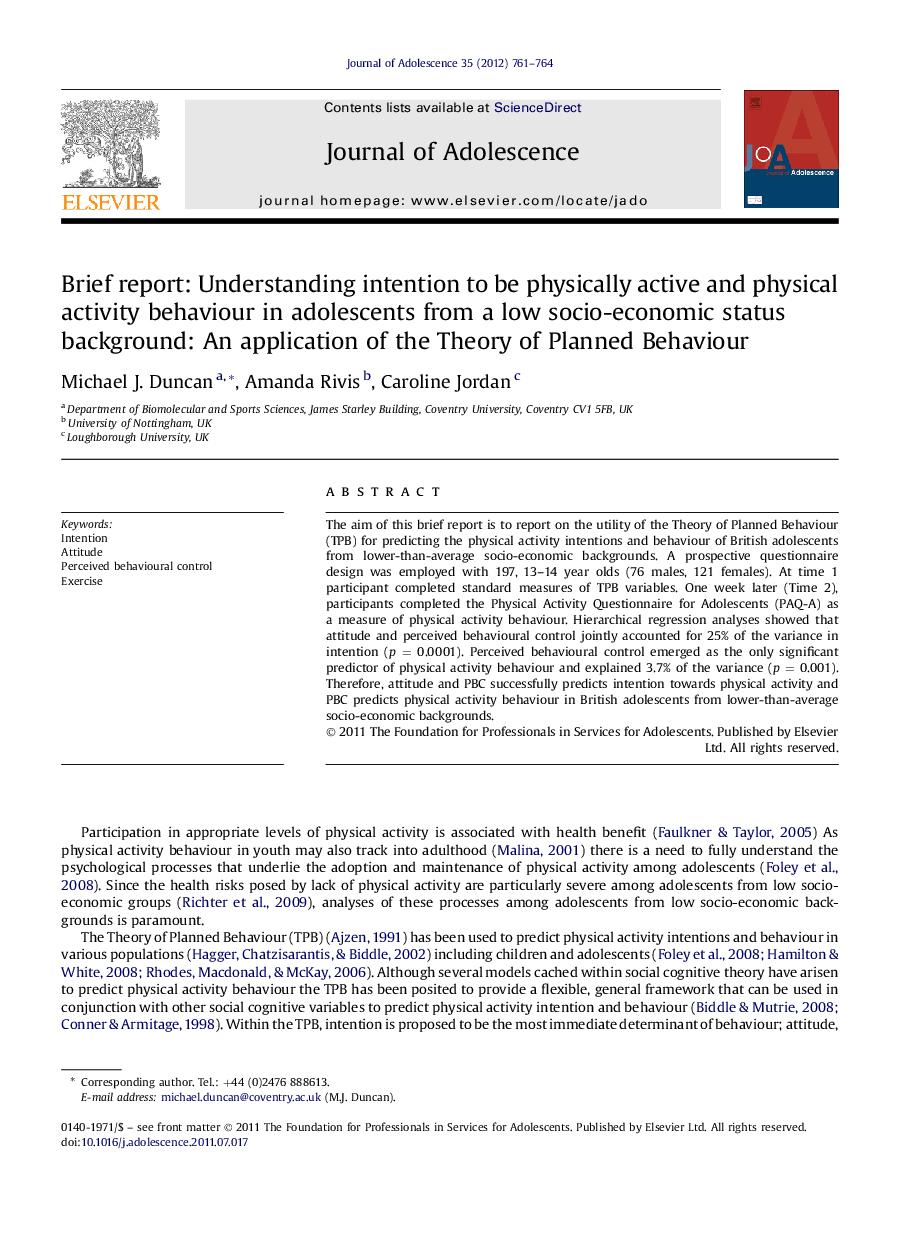| Article ID | Journal | Published Year | Pages | File Type |
|---|---|---|---|---|
| 10436745 | Journal of Adolescence | 2012 | 4 Pages |
Abstract
The aim of this brief report is to report on the utility of the Theory of Planned Behaviour (TPB) for predicting the physical activity intentions and behaviour of British adolescents from lower-than-average socio-economic backgrounds. A prospective questionnaire design was employed with 197, 13-14 year olds (76 males, 121 females). At time 1 participant completed standard measures of TPB variables. One week later (Time 2), participants completed the Physical Activity Questionnaire for Adolescents (PAQ-A) as a measure of physical activity behaviour. Hierarchical regression analyses showed that attitude and perceived behavioural control jointly accounted for 25% of the variance in intention (p = 0.0001). Perceived behavioural control emerged as the only significant predictor of physical activity behaviour and explained 3.7% of the variance (p = 0.001). Therefore, attitude and PBC successfully predicts intention towards physical activity and PBC predicts physical activity behaviour in British adolescents from lower-than-average socio-economic backgrounds.
Related Topics
Health Sciences
Medicine and Dentistry
Public Health and Health Policy
Authors
Michael J. Duncan, Amanda Rivis, Caroline Jordan,
